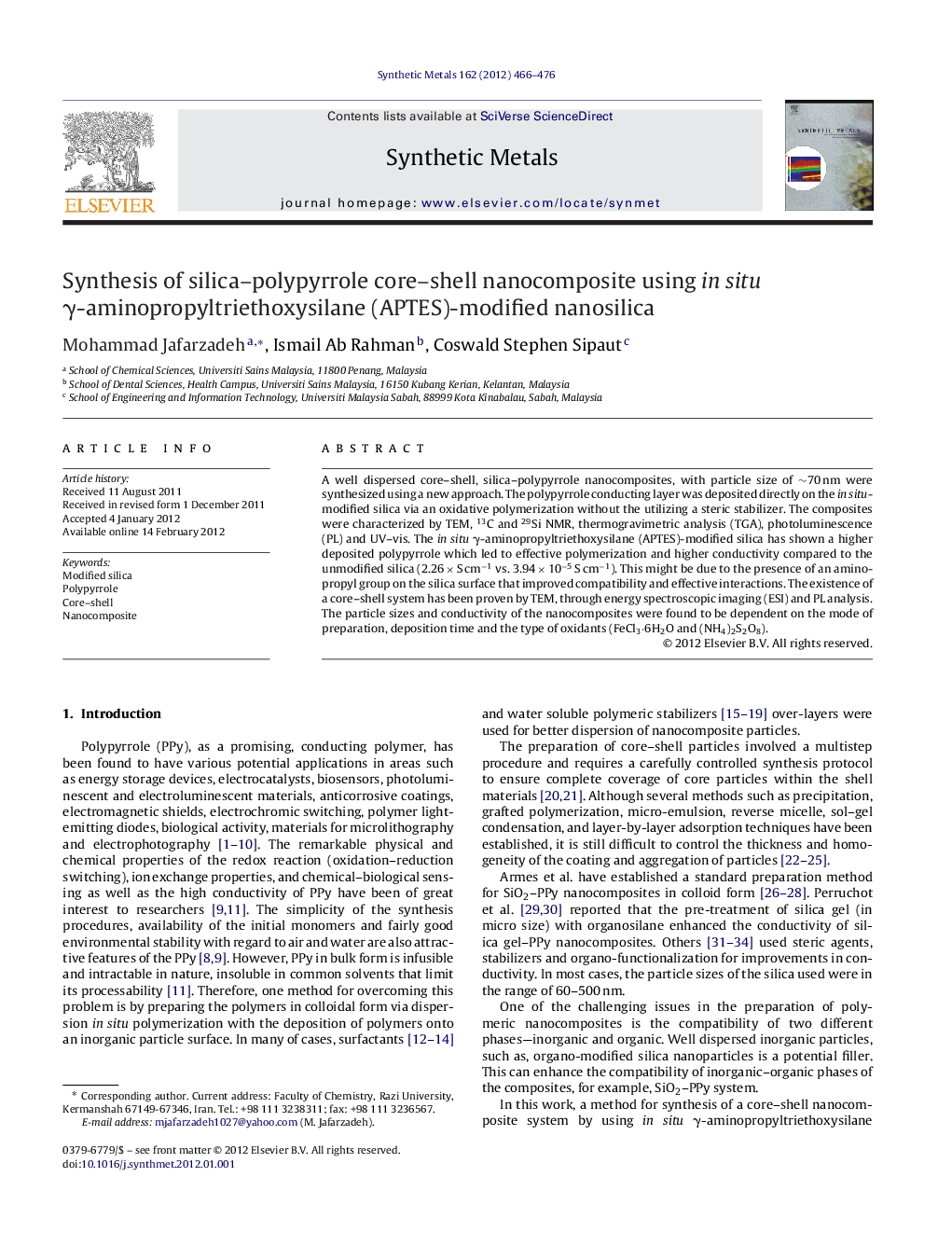| Article ID | Journal | Published Year | Pages | File Type |
|---|---|---|---|---|
| 1442097 | Synthetic Metals | 2012 | 11 Pages |
A well dispersed core–shell, silica–polypyrrole nanocomposites, with particle size of ∼70 nm were synthesized using a new approach. The polypyrrole conducting layer was deposited directly on the in situ-modified silica via an oxidative polymerization without the utilizing a steric stabilizer. The composites were characterized by TEM, 13C and 29Si NMR, thermogravimetric analysis (TGA), photoluminescence (PL) and UV–vis. The in situ γ-aminopropyltriethoxysilane (APTES)-modified silica has shown a higher deposited polypyrrole which led to effective polymerization and higher conductivity compared to the unmodified silica (2.26 × S cm−1 vs. 3.94 × 10−5 S cm−1). This might be due to the presence of an aminopropyl group on the silica surface that improved compatibility and effective interactions. The existence of a core–shell system has been proven by TEM, through energy spectroscopic imaging (ESI) and PL analysis. The particle sizes and conductivity of the nanocomposites were found to be dependent on the mode of preparation, deposition time and the type of oxidants (FeCl3·6H2O and (NH4)2S2O8).
► Well-dispersed SiO2@PPy core–shell form using in situ modified silica. ► Oxidative polymerization of pyrrole without using steric and charge stabilizer. ► Conductivity: 2.26 S cm−1, nanoscale vs. reported result: 2.6 × 10−2 S cm−1, microscale. ► Particle size and conductivity depend on mode of preparation and type of substrates. ► Polymerization occurred on silica surface, avoiding individually PPy nanoparticles.
